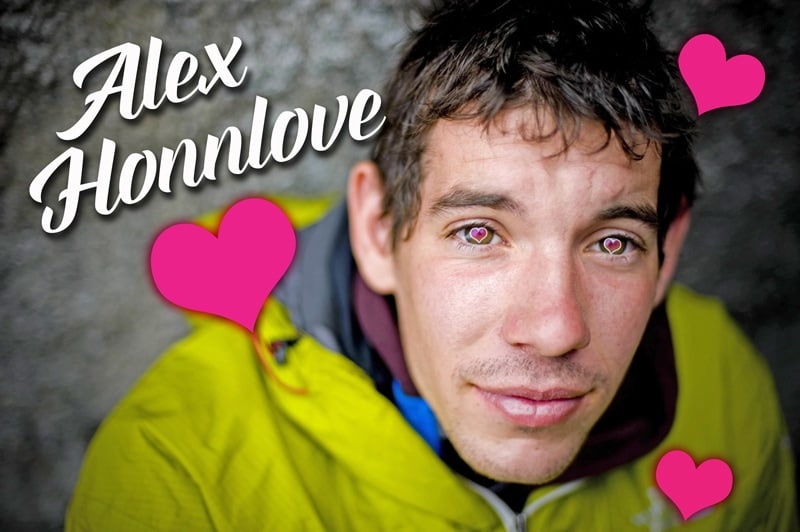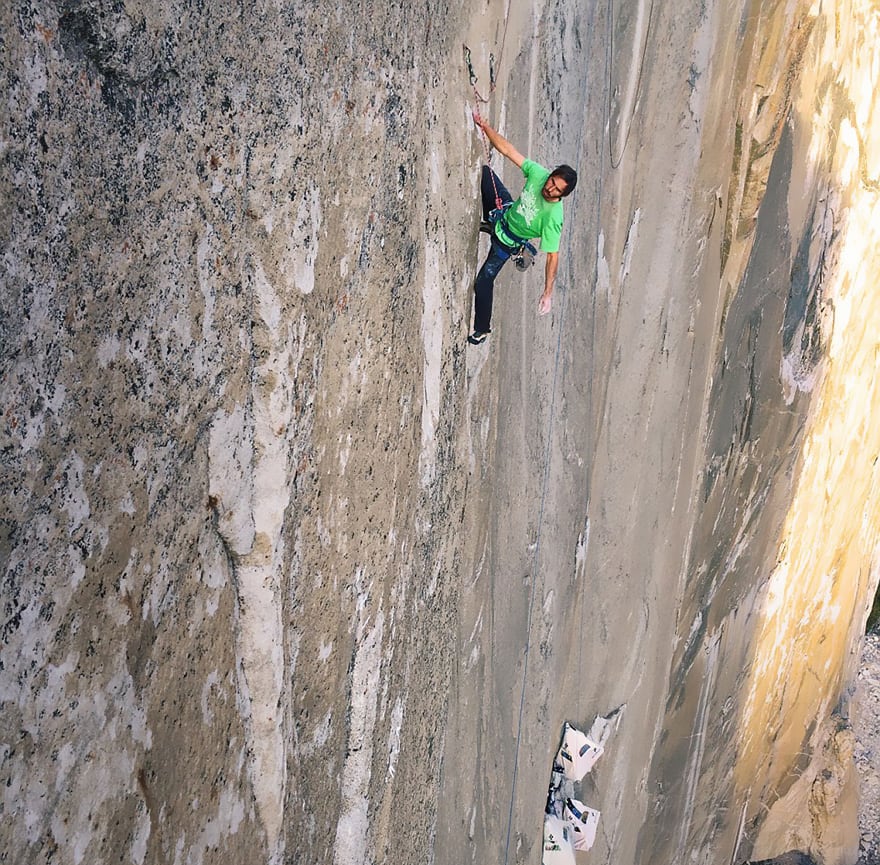I don’t think anyone in the climbing world expected the #DawnWall to become a juggernaut of a news story. Seemingly every news source covered it, with varying degrees of success.

ABC News contributed this priceless gem of “journalism.” This interview with “Alex Honnlove” has to be one of the most awkward and hilarious interviews I’ve seen. Then there’s the whole fact that every name in this report is spelled wrong—and it’s not as though Alex Honnold is a nobody. The fact that ABC news can’t even get the most basic facts—just a two-second Google search away—correct makes you realize how low the bar for journalism is today. Horrifying stuff, really.
Curiously, Outside Magazine seemed to be the only “outdoorsy” publication lacking in any serious coverage of the climb. I happened to see that one of the editors at Outside also made a snarky comment on Facebook about the “Yawn Wall.” After six years of hearing about it in our niche magazines, core websites and cult-climbing films, it’s hard to blame him for that sentiment.
But, boy, was he wrong.
All the attention given to the Dawn Wall gave this ascent a sense of importance, as if it were the very first moon landing, or something. Ironically, in 2015 a moon landing would barely generate a page-3 blurb. Yet the Dawn Wall struck a chord.
I wonder why?

For about two weeks in January, the general population stopped and took a moment to pay attention to our insular little climbing world. And despite many awkward, fumbling attempts to succinctly define “free climbing,” I gotta say that everyone made a pretty honest effort at trying to understand what, exactly, we climbers do.
As you may know, I was fortunate enough to be given the opportunity to cover the Dawn Wall for National Geographic—a real privilege and honor. (Check out the Evening Sends Facebook page for links to these stories.) Yet, in covering this story, I realized just how freakin’ hard it is to quickly, accurately and succinctly describe what it means to complete a first free ascent of the Dawn Wall. I mean, I’m a professional climbing writer with over a decade of experience, and even I found myself banging my head on my laptop over how to best describe this event to a general audience. I can only imagine how a writer who doesn’t even climb must have struggled to grasp all the rules of our silly little game.
Explaining what the #dawnwall is to a general audience #whatsyourdawnwall
— Andrew Bisharat (@EveningSends) January 18, 2015
Think about it. Where do you even begin? You start out with the facts that free climbing isn’t aid climbing, but it isn’t free-soloing, either. Then you have to talk about the rules of sending/redpointing each pitch, but don’t use that term “redpointing” unless you want to take your readers off on a huge tangent into a dank, dark Franken-forest, circa 1980-something. What is a “pitch,” even? In most contexts, it’s accurate to say it’s the climbing path between each belay; but the Dawn Wall was a new route, meaning that the first ascentionists were chose the belays based on a “stance-to-stance” style—i.e., wherever they can “take their hands off the wall”—which kinda just makes the whole thing sound completely arbitrary (which, let’s be honest, it is).
Anyway. My point is that I have some sympathy for anyone who is faced with the onerous task of writing about free climbing, especially a complicated route such as the Dawn Wall. They say a picture is worth a thousand words, and that feels so completely true in this case, especially when those pictures are moving.
As I wrote earlier, I’m really thankful that the Dawn Wall—with its really hard, high-end rock climbing by two regular, good-natured dudes—became the emblem for our sport, rather than the other usual suspects that typically nab a mainstream headline here and there. I.E.: insane free-soloing; money-driven and exploitative mountaineering a la Mt. Everest; and other stupid circus tricks like walking on a high line with your balls as the backup. Etc.

The comments to many of the mainstream news stories were also quite revealing. They seemed divided between two groups of humans: There were those who just can’t possibly understand why anyone would bother doing something so selfish, absurd and frivolous.
Then there are other people—those, ostensibly, who actually have passions in their own lives. They got climbing! (I like these people.)
Meanwhile, the climbing world has been focusing on the style in which the Dawn Wall was freed: dissecting how Caldwell and Jorgeson pushed the definition of “team-free” to mean something more like a Himalayan expedition than the normal lead-swingin’, weekend-warriorin’ multi-pitch climbing that most of us do.

Pitch 16, for example, is one really confusing section that the climbing community is still struggling to understand how it was climbed—and whether it can be considered one pitch, or two, or three.
I also find those questions interesting and worth exploring (stay tuned for my feature on Dawn Wall style in the next issue of Rock and Ice).
Yet I think the most valuable thing that I learned from the past two weeks of writing about the Dawn Wall, and observing the general public’s reaction to this event, is that the thing that really makes climbing cool has so much less to do with grades, style and all the other little particulars that we tend to focus on as obsessive climbers. Really, what makes climbing so great—and so relatable to anyone even if they’ve never ascended anything harder than a flight of stairs—is that climbing offers us a way to dream big, go on adventures and work hard to achieve something challenging.
We no longer have moons to reach, or summits to conquer. Every thing on this planet has been documented and mapped by Google and monetized by the Facebooks of the world. Yet we humans still have the capacity to dream up the most insane and pointless challenges in order to find new, fulfilling ways to push our minds and bodies to our own limits.

Kevin on pitch 15. Photo Corey Rich
Climbing is a context in which personal meaning can be derived from the utterly meaningless—the sheer absurdity that is climbing rocks for fun. Really, that is the story of rock climbing today: it’s a passion-based framework for leading a pretty good life. No more, no less.
The world has already moved on to other subjects, and by the time the Super Bowl gets here, I’m sure climbing will have returned to being a tiny, insular sport that nobody really understands or cares about. But I feel lucky that we got a couple weeks in the spotlight to share with the world, even for just a moment, what makes climbing the greatest sport on earth.




Superb writing Andrew! Thanks for sharing!
Thanks Andre!
Right on.
Andrew you consistently put out gem after gem, keep producing amazing content…please!
Thank you so much!
“Climbing is a context in which personal meaning can be derived from the utterly meaningless—the sheer absurdity that is climbing rocks for fun. Really, that is the story of rock climbing today: it’s a passion-based framework for leading a pretty good life. No more, no less.”
That’s probably the most succinct definition for climbing i’ve ever read.
Really well written article Andrew. Keep up the good work : )
Great article, summed it all up brilliantly!
Sweet article. I’ve really been enjoying following the story on Evening Sends. (lol picture of Sketchy Andy)